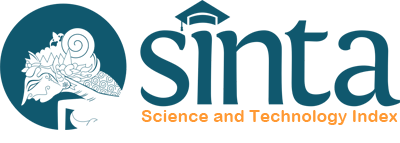The Relationship between Psychobiotics and Anxiety Disorder
Abstract
Anxiety has manifestations involving excessive fear and anxiety that impact everyday life. The prevalence of anxiety was estimated reaching 10.6% in a year and 16.6% for life in the world. Psychobiotics become one of the promising therapies for anxiety. This paper was made by finding sources from journals and textbooks related to the pathogenesis of anxiety, relationship between brain and the gastrointestinal tract, microbiota and psychobiotics, and also the relationship between psychobiotics and anxiety. Anxiety is caused by the dysregulation of neurotransmitters such as gamma-aminobutyric-acid, serotonin, and noradrenaline. Tryptophan metabolism via kynurenine pathway and hormones secreted by digestive tract also play roles in anxiety. Apart linked by the N. vagus, the inflammatory factor is produced by cortisol in hypothalamus-pituitary-adrenal axis connecting digestive tract and brain in terms of anxiety. Psychobiotics play a role in producing neurotransmitters that are dysregulated during anxious conditions. The production of short-chain fatty acids, tryptophan metabolism, and microbe-associated molecular patterns in psychobiotics creates a protective factor against intestinal leakage and reduces inflammation produced by pathogenic bacteria. Short-chain fatty acids interact with cholecystokinin peptides, tyrosine peptide tyrosine, and glucagon like peptide-1. Relationship between psychobiotics and anxiety is mediated by N. Vagus. Thus, psychobiotics play a role in helping reduce anxiety.
Downloads
 Viewer: 1107 times
Viewer: 1107 times
 PDF (Bahasa Indonesia) downloaded: 2767 times
PDF (Bahasa Indonesia) downloaded: 2767 times











